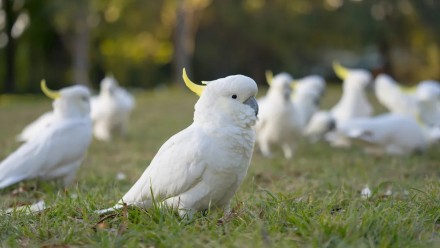Bluetooth technology unlocks urban animal secrets
Mobile phones could be the key to a cheaper and more reliable way of tracking animals for ecology and conservation research, according to a new study from The Australian National University (ANU).
Traditional animal tracking methods are often expensive and require the tagged animals to be close to the tracking technology.
Now ANU researchers have developed a cheap, lightweight Bluetooth beacon that can provide regular updates through our network of mobile phones in areas used by people carrying phones or smartwatches.
Study lead author and ANU ecologist, Associate Professor Damien Farine, said the new Bluetooth device helps overcome existing challenges when it comes to animal tracking.
“By piggybacking off the global network of personal mobile phones, we’re using Bluetooth beacons as a gateway for tracking animals, and we’ve demonstrated its potential to study the movements, home ranges and social networks of urban living animals,” he said.
“Until now, animal tracking studies have faced technological limitations such as high costs or the need for tags to remain near detectors, and this new device overcomes these limitations.
“The device works through mobile phones, so as people walk near the birds, they pick up the tag’s signal, and their phones upload the data to the cloud. This all happens automatically with no information collected about the phones themselves, only the identity and location of the tag.
“Animals can have fascinating responses to urban habitats, and the ability to cheaply and reliably track them will help to unlock many secrets of our urban wildlife.”
According to the ANU researchers, these simple and inexpensive beacons can provide regular position updates in areas with medium to high density of people, with a battery life of one to two years.
“There’s a lot that we still have to learn about how animals adapt to and survive in urban habitats, but the tags we developed are cheap, lightweight, and have no download costs,” said Associate Professor Farine.
The research is published in Methods in Ecology and Evolution.
This article was first published by ANU Reporter.








